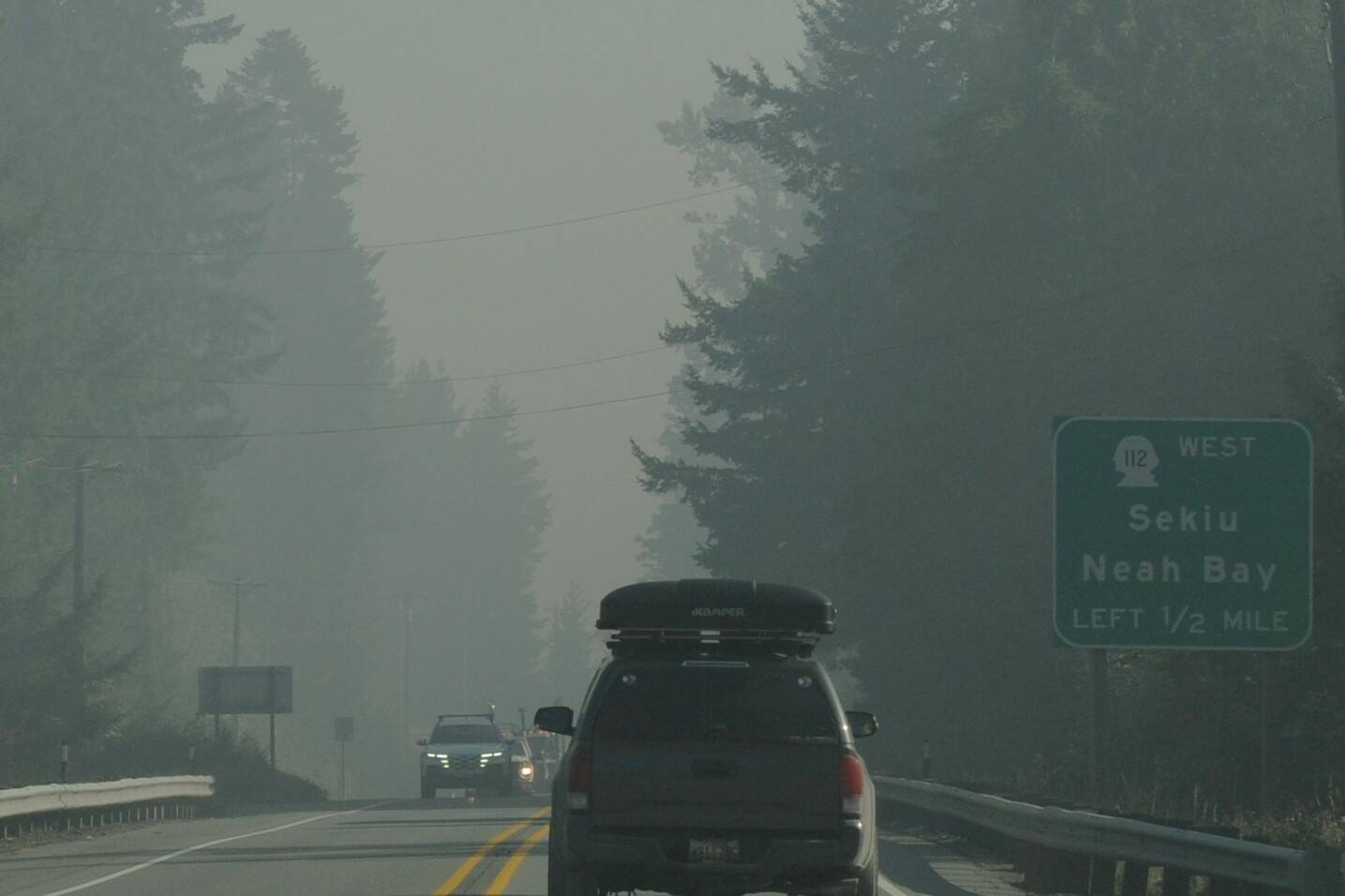Delabarre Fire swells to more than 4K acres
By Leah Leach
Olympic Peninsula News Group
PORT ANGELES — Light precipitation Saturday and Sunday cooled the intensity of Olympic National Park wildfires but did not stop them.
The biggest fire of the seven burning in the park, the Delabarre Fire, had swelled to 4,165 acres as of Sunday afternoon, said Ken Malgren, fire information lead, on Sunday.
The little bit of rain was “not anywhere near enough … to do any real good,” Malgren said.
However, cooler temperatures and moisture did dampen the fires enough to allow a couple of crews to be released, he said.
As of Sunday, the Low Divide Fire had grown to 340 acres. The Martins Lake Fire, northeast of Mount Christie, was at 122 acres and the Mount Queets Fire encompassed 7 acres.
The two fires at Hurricane Ridge did not grow — the Eagle Point Fire was at 123 acres and the Hurricane Fire at 4. Also remaining the same as on Friday was the Diamond Mountain Fire, northeast of Anderson Pass, at 30 acres.
All seven active fires in Olympic National Park ignited when a series of lightning strikes occurred on the Olympic Peninsula in the afternoon of Aug. 28.
Firefighters are letting them burn out since they are in wilderness areas and threaten no population centers, but they are monitoring all closely, park officials said.
Smoke, which choked the Lower Elwha Klallam reservation and Port Angeles as it poured down the Elwha Valley from the Delabarre fire on Friday, had cleared by Sunday after the wind shifted.
Air quality was reported to be good across the North Olympic Peninsula by AirNow at https://fire.airnow.gov.
Rain, which meteorologists originally expected to begin in the lowlands Saturday, held off. But it was forecast to begin Sunday evening and continue through most of this week as fronts come into the region.
A warm front was expected to push into Western Washington late Sunday, bringing in more rain than has been seen in some time, according to forecasters, with 1 to 2 inches on the coast and 3 to 5 inches in the Olympics by Monday afternoon.
There was a chance that cooler air might spark thunderstorms Monday, the National Weather Service said.
By next weekend, drier air is predicted in the area.
The Obstruction Point Road and Trailhead were closed soon after the fires began. Nine more trails have been closed to public access.
They are:
• Elwha River Trail from Elkhorn to Low Divide.
• Bailey Range Traverse beyond Cat Basin.
• Long Ridge Trail to Dodger Point.
• Hayden Pass Trail.
• Dosewallips River Trail from Dose Meadows to Hayden Pass.
• Dodger Point Way Trail.
• North Fork Quinault Trail from Elip Creek trail junction to Low Divide.
• Skyline Trail from Elip Creek Trail junction to Low Divide.
• Martin Park Trail.
Wilderness wildfires that don’t threaten structures are generally allowed to burn out on their own since they can contribute to the health of the forest, fire managers have said, by clearing out understory brush and snags.
Information for the 2023 Olympic National Park wildfires can be found at: https://inciweb.wildfire.gov/incident-information/waolp-2023-olympic-national-park-lightning-fires.
Executive Editor Leah Leach can be reached at 360-417-3530 or at lleach@peninsuladailynews.com.



